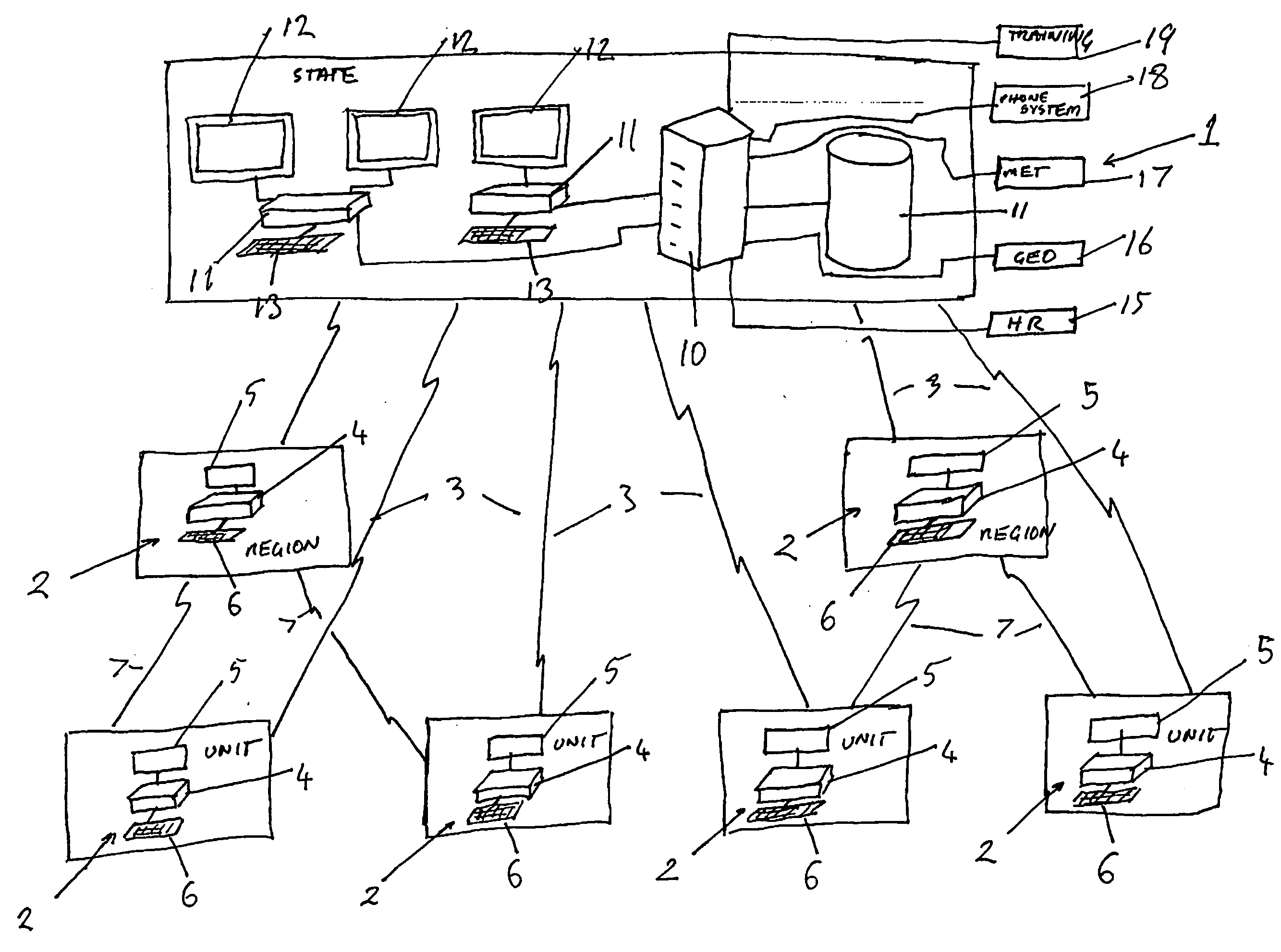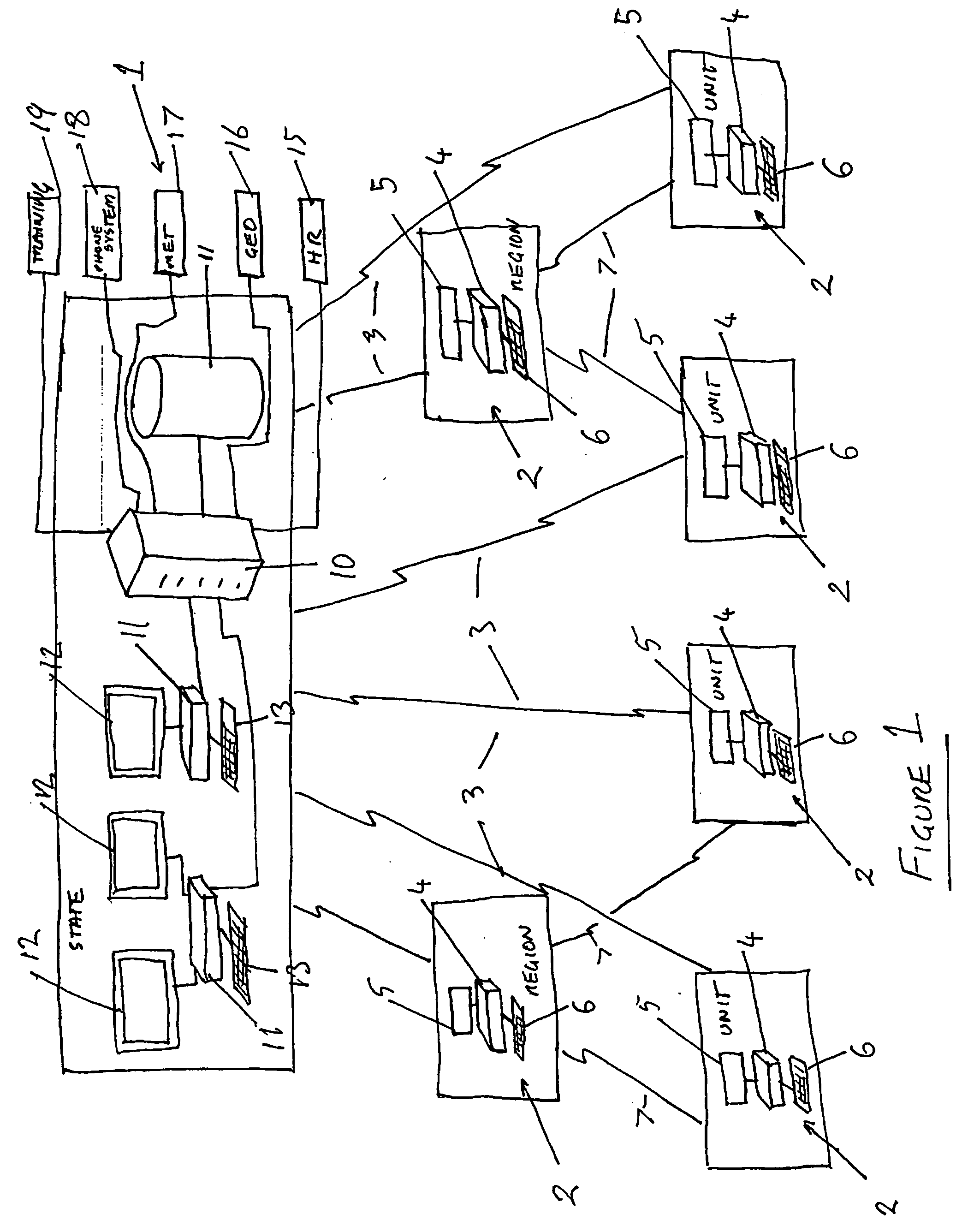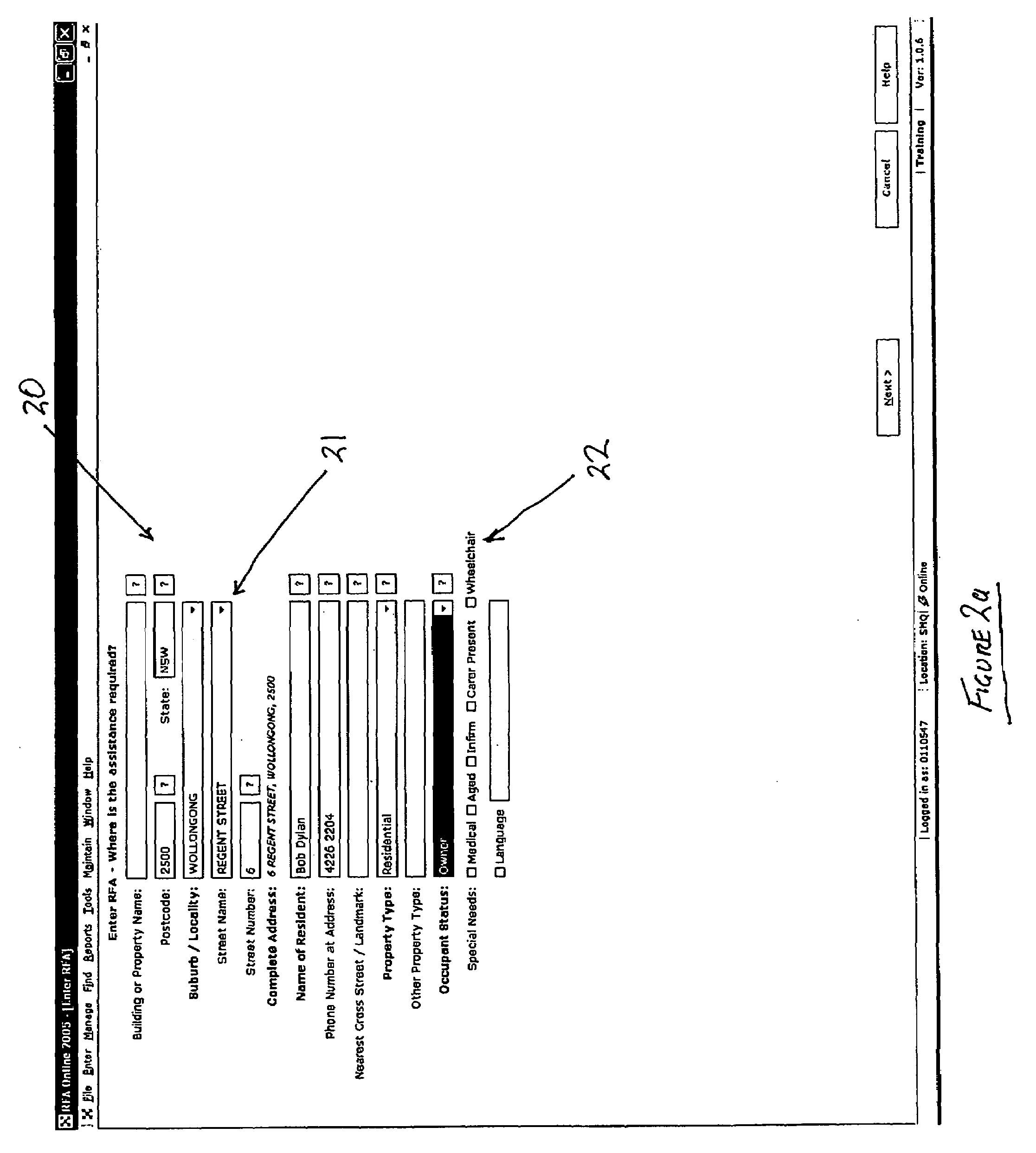System and method for coordinating remote response services
- Summary
- Abstract
- Description
- Claims
- Application Information
AI Technical Summary
Benefits of technology
Problems solved by technology
Method used
Image
Examples
Embodiment Construction
[0094]FIG. 1 schematically illustrates a system for facilitating co-ordinating of remote response services, in accordance with an embodiment of the present invention. The system includes a host computing system, generally designated by reference numeral 1, and a plurality of remote computing systems 2. Each of the computing systems 1, 2 in this embodiment, enables an operator to enter a Request For Assistance (RFA). An RFA is a term which is intended to identify the concept of an incident which requires a response by response services. For example, the incident may be an emergency incident which requires services personnel to attend in order to deal with the emergency incident. The term RFA is intended to include any type of request for assistance (and is not limited to the particular terminology “Request for Assistance”—other embodiments of the system may utilise different terminology from this, but the concept will generally be the same).
[0095]In this embodiment, the host computin...
PUM
 Login to View More
Login to View More Abstract
Description
Claims
Application Information
 Login to View More
Login to View More - R&D
- Intellectual Property
- Life Sciences
- Materials
- Tech Scout
- Unparalleled Data Quality
- Higher Quality Content
- 60% Fewer Hallucinations
Browse by: Latest US Patents, China's latest patents, Technical Efficacy Thesaurus, Application Domain, Technology Topic, Popular Technical Reports.
© 2025 PatSnap. All rights reserved.Legal|Privacy policy|Modern Slavery Act Transparency Statement|Sitemap|About US| Contact US: help@patsnap.com



